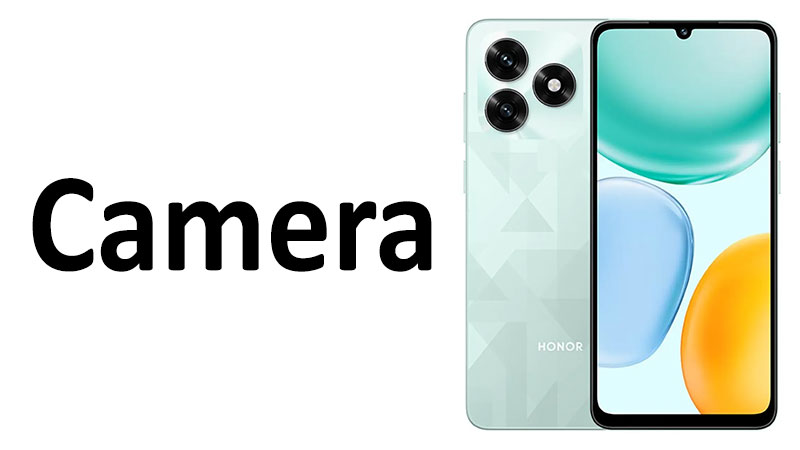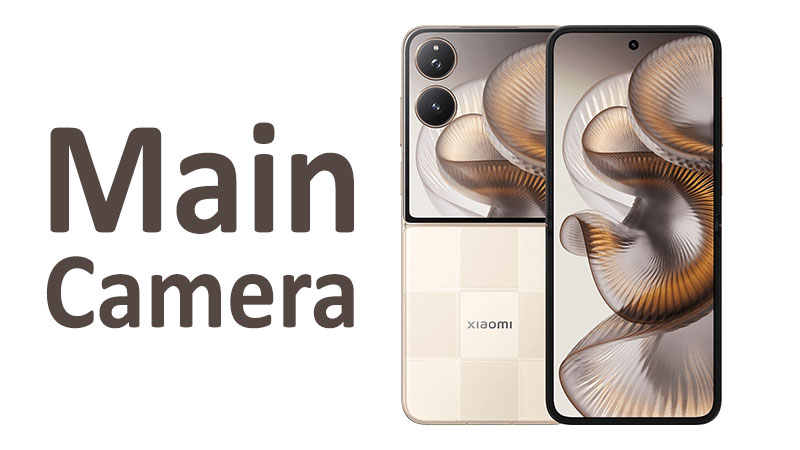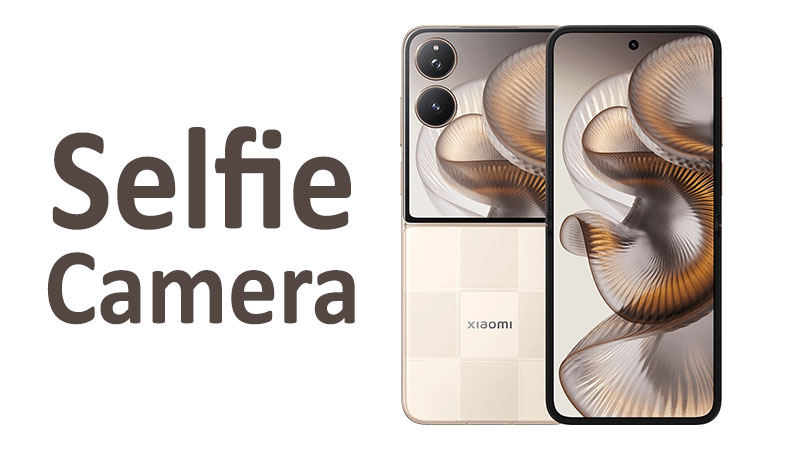The Honor Play 10A camera system marks a definitive entry into the competitive budget segment. Many potential buyers are now closely analyzing its specifications and real-world photography performance. This detailed article explores every aspect of this smartphone’s imaging capabilities. We will analyze the hardware choices, evaluate the software processing, and help you determine its true photographic value. Our goal is to provide a complete, SEO-friendly guide for prospective Honor Play 10A owners. Read on to discover the specific strengths and weaknesses of this unique budget camera offering.
A Comprehensive Review of the Honor Play 10A Camera System
The Honor Play 10A features a prominent single main camera paired with an auxiliary lens on the rear. This minimalist setup focuses resources on the primary imaging sensor. It aims to deliver high-quality results in the most common shooting scenarios. The core of this system is an impressive 50MP main sensor. This hardware choice is clearly designed to catch the eye of consumers looking for high resolution. We will meticulously break down these components. We will then assess how they contribute to the final user experience.
Technical Specifications: The Primary Lens Detailed
Understanding the hardware is crucial for evaluating performance. The Honor Play 10A relies almost entirely on its main camera unit. This approach streamlines the system for efficiency.
The 50MP Primary Wide Camera and Aperture
The primary camera is the device’s photographic powerhouse. It utilizes a 50 MP sensor with a fast f/1.8 aperture. This wide aperture is significant for a phone in this price bracket. It allows maximum light to reach the sensor. Consequently, this helps improve performance in moderately dark conditions. The 50MP resolution itself is primarily used for light capture. It typically uses pixel-binning technology. The phone combines four pixels into one large super-pixel. This process results in a clearer, sharper 12.5MP final image. Users can often select a dedicated 50MP mode. This captures the full resolution but may introduce more noise. It is better to rely on the standard 12.5MP output.
Specialized Comparison: The f/1.8 aperture is a strong feature for a budget phone. Many competitors offer a narrower f/2.0 or f/2.2 aperture on their primary lens. The wider f/1.8 aperture gives the Honor Play 10A a distinct low-light advantage. This is especially true when compared to previous Honor Play models. Earlier versions often featured 48MP sensors with a less bright f/2.0 aperture. Therefore, the 10A offers superior light gathering capability.
Phase Detection Autofocus (PDAF)
The main lens includes Phase Detection Autofocus, or PDAF. This technology is a significant advantage. PDAF uses specialized pixels to measure focus distance quickly. It provides fast and accurate focusing. This feature is particularly crucial for capturing fast-moving objects. It also helps users achieve sharp results in low-light situations. A fast autofocus system greatly enhances the overall shooting experience.
The Role of the Auxiliary Lens
The rear module also contains an auxiliary lens. The specific purpose of this lens is not fully detailed. In most modern budget phones, this type of lens serves one of two functions. It usually acts as a simple depth sensor for portrait effects. Alternatively, it can assist the software with AI scene recognition. Given the single main sensor, the auxiliary lens is almost certainly there for depth data. It helps the main camera create the popular background blur, or bokeh effect. Its primary value is assisting the software.
Analyzing Daylight Photography Performance
The performance of the Honor Play 10A camera truly shines under bright daylight. Optimal lighting allows the large sensor and fast aperture to work together. This results in highly detailed and vibrant photographs.
Detail, Resolution, and Clarity
Daylight images captured by the Honor Play 10A are generally excellent. The standard 12.5MP photos are crisp and show strong definition. Fine details, such as patterns in clothing or foliage, remain well-preserved. The 50MP sensor ensures the raw data is rich. The processing then downscales this information intelligently. This provides the best balance between detail and file size. Users who enjoy zooming into their photos will appreciate this clarity.
Color Accuracy and White Balance
The color science employed by Honor is typically balanced. The Play 10A produces colors that are natural yet appealing. It avoids the excessive saturation sometimes found in competing devices. Color accuracy remains high in clear outdoor conditions. The auto white balance system handles direct sunlight very well. It produces pleasingly realistic hues in most scenarios. This ensures that blue skies look natural and landscapes remain true to life.
Dynamic Range and HDR Execution
High Dynamic Range, or HDR, is a vital feature for modern mobile photography. It is designed to balance extremely bright and extremely dark areas within the same scene. The Honor Play 10A includes a functional HDR mode. This mode performs adequately in challenging, high-contrast environments.
The HDR processing successfully manages highlights. It prevents bright skies from being completely blown out. Similarly, it lifts shadow detail to avoid crushingly dark areas. For a budget phone, the dynamic range performance is respectable. Users should expect a slight pause during HDR processing. This is normal, as the phone combines multiple exposures into one balanced image.
Important Point for Buyers: Always use the HDR feature when shooting during midday. It is also essential when taking photos against a bright window or sunset. It dramatically improves the consistency of the final image quality.
Low-Light and Night Photography Assessment
The Honor Play 10A’s low-light imaging capabilities are a critical test. They rely heavily on the hardware’s light-gathering ability. The wide f/1.8 aperture is a significant asset here.
Impact of the Wide Aperture
The f/1.8 aperture helps tremendously in darker settings. It pulls in more available light than sensors with smaller apertures. This reduces the camera’s need to aggressively boost the ISO sensitivity. Lower ISO settings inherently mean less image noise. Consequently, low-light photos from the Play 10A are reasonably bright. They are also well-exposed in areas with some ambient light. Examples include street scenes or indoor environments.
Noise Management and Detail Retention
The camera software is engineered to minimize noise and graininess. This is achieved through sophisticated noise reduction algorithms. These algorithms are generally effective. However, they introduce a trade-off. Aggressive noise reduction can sometimes smooth over fine details. This results in a slightly “mushy” look in the darkest areas. Fine textures are lost in favor of cleaner, smoother surfaces. The performance is solid for its class. Yet, it does not match flagship devices with dedicated night modes.
Specialized Comparison: Night Performance Against Rivals
Many budget rivals now feature specific Night Mode software. These modes use long exposure techniques and computational stacking. The Honor Play 10A appears to rely more on its raw hardware and general processing. Therefore, it will be outperformed by rivals that prioritize computational photography. The Play 10A is a strong contender in ambient low light. However, it struggles in near-dark conditions where computational modes thrive.
Video Recording Capabilities and Quality Analysis
The video specifications for the Honor Play 10A are straightforward. It supports a maximum resolution of 1080p at 30 frames per second. This offers clear, standard high-definition video.
1080p Video Quality and Limitations
The 1080p footage is sufficiently detailed for casual recording. It provides adequate quality for social media sharing and personal memories. The 30fps frame rate is standard and suitable for most general-purpose videos. However, the camera lacks the ability to shoot at 4K resolution. This is a common feature on many current mid-range phones. The absence of 4K may disappoint users who require maximum video fidelity.
Furthermore, the phone does not include Optical Image Stabilization (OIS). This is to be expected in a budget device. All video stability relies on Electronic Image Stabilization, or EIS. EIS helps smooth out minor jitters. However, it can often introduce a slight crop into the video frame. Serious video creators may find the stabilization limiting. It is best to use the phone with a small tripod for truly steady shots.
Audio Recording for Video
The quality of the video’s accompanying audio is also important. The built-in microphone captures clear, intelligible sound. It is suitable for recording speeches or capturing dialogue. However, it struggles in windy or very loud environments. The microphone system is perfectly adequate for basic video clips and vlogging.
Important Point for Buyers: The 1080p limitation confirms the Honor Play 10A is aimed at casual users. It is not designed for advanced video production tasks. If 4K video is a necessity, buyers should explore other options. The EIS performs better at 1080p than it would at 4K.
Reviewing the 5MP High-Resolution Selfie Camera
The front-facing camera on the Honor Play 10A is designed for quick self-portraits and video calls. It features a simple 5 MP sensor with an f/2.2 aperture.
Self-Portrait Detail and Quality
The 5MP resolution is decidedly low by today’s standards. Most budget rivals offer 8MP or 16MP front cameras. Consequently, selfies from the Play 10A lack the fine detail found in competitors’ photos. Images are soft, and heavy cropping is not advisable.
However, the quality is acceptable for basic social media use. It is also perfectly functional for quick video chats. The f/2.2 aperture is relatively narrow. This means the selfie camera struggles more in dim lighting. Users need sufficient light to get a clean, usable self-portrait. The camera applies natural-looking beauty effects by default.
Video Calling and Vlogging Suitability
The selfie camera records video at 1080p resolution at 30fps. This is a strong point for video communication. The high-definition video is clear for applications like FaceTime and Zoom. It performs well for casual vlogging. The quality is consistent and reliable for these daily communication needs. Despite the lower photo resolution, the video quality is surprisingly stable.
Specialized Comparison: The 5MP sensor is the biggest compromise in the Honor Play 10A camera setup. It lags significantly behind high-megapixel selfie cameras from brands like Xiaomi or Samsung. The focus here is clearly on simplicity and cost savings. This is a key area where buyers must prioritize the rear camera over the front.
Camera Interface, Software, and Shooting Modes
The camera software is just as important as the hardware. A user-friendly interface makes the most of the sensors. The Honor Play 10A’s camera application is streamlined and efficient.
Interface Ergonomics and Ease of Use
The camera interface is intuitive and easy to navigate. The design is clean, allowing users to switch modes quickly. Standard shooting modes like Photo, Video, and Portrait are prominently featured. The core controls are easily accessible on the main screen. This includes the digital zoom and the flash controls. The app is fast and minimizes frustration during the shooting process.
Essential Features: HDR and Panorama
The software includes several critical features. These expand the creative options available to the user.
- HDR Mode: We have already discussed the function of HDR. It is easily activated within the camera app. It is indispensable for high-contrast scenes.
- Panorama: This mode allows the user to sweep the camera across a scene. The software then stitches the images together. This creates a single, super-wide panoramic shot. The stitching quality is solid and produces visually impressive results.
- LED Flash: The built-in LED flash works well. It provides a burst of light for extremely dark scenarios. It is effective for short-range illumination.
Shutter Speed and Processing Time
The Honor Play 10A performs well regarding shot-to-shot time. The shutter response is fast in good lighting. This responsiveness is aided by the quick PDAF system. However, there is a minor processing delay when shooting in HDR mode or the full 50MP resolution. The phone’s processor requires a moment to process the large amounts of data. This short wait is a fair trade-off for enhanced image quality. The overall experience is positive and responsive for everyday use.
Pros, Cons, and Essential Advice for Buyers
The Honor Play 10A camera system presents a clear balance of advantages and trade-offs. It is important to summarize these points for clear guidance. Setting realistic expectations is the key to buyer satisfaction.
Honor Play 10A Camera Pros
The system’s strengths lie in its primary components. These advantages make it a highly competitive budget camera phone.
- High-Resolution Main Sensor: The 50MP primary lens captures sharp, excellent detail in bright light.
- Fast f/1.8 Aperture: This wide aperture significantly enhances light collection. It improves performance in low-light conditions.
- Phase Detection Autofocus (PDAF): This technology ensures rapid and reliable focusing. It reduces the chance of blurry pictures.
- User-Friendly Interface: The camera application is quick, stable, and easy for new users to navigate.
- Affordable Quality: It provides top-tier resolution and performance for its budget price.
Honor Play 10A Camera Cons
The phone’s budget nature required specific compromises. These compromises are visible in the supporting features.
- Low-Resolution Selfie Camera: The 5MP front sensor delivers softer, less detailed self-portraits compared to rivals.
- No 4K Video Support: The maximum video resolution is limited to 1080p at 30fps.
- No Optical Image Stabilization (OIS): Video quality can be shaky without external support.
- Basic Auxiliary Lens: The secondary lens is limited to depth sensing and offers no independent shooting utility.
- Absence of Advanced Night Mode: Low-light performance is good but lacks the computational boost of high-end Night Modes.
Essential Advice for Buyers
Buyers considering the Honor Play 10A should understand where its value lies. The camera is highly competent in its core functions. It is a photographic workhorse for daily snaps.
Here are three important takeaways for buyers:
- Focus on the Main Camera: The 50MP main lens is the primary selling point. This is where Honor invested most of the budget. It excels in bright, everyday light.
- Accept the Video Limitation: If 4K recording is essential for your use, this phone is not the best fit. Otherwise, the 1080p footage is perfectly adequate for sharing.
- Manage Selfie Expectations: The 5MP front camera is a noticeable weakness in a crowded market. It works for video calls but will not produce highly detailed selfies.
The Honor Play 10A camera is a fantastic choice for the casual photographer. It is ideal for users who prioritize the rear camera and need reliable daytime performance. It offers great photographic value on a budget.
Conclusion
The Honor Play 10A camera system offers a clear strategy: maximize the quality of the primary sensor. This approach has largely succeeded. The 50MP main camera, supported by a wide f/1.8 aperture and PDAF, captures sharp and vibrant images. Its performance in daylight is consistently impressive. This makes it a strong contender in the budget smartphone category. The camera software is fast and intuitive to use. It provides essential features like HDR and Panorama.
However, the phone is not without its limitations. The primary drawbacks are the low-resolution 5MP selfie camera and the lack of 4K video recording. The simple auxiliary lens does little more than assist with portrait mode. Ultimately, the Honor Play 10A is a stellar choice for its price segment. It is perfect for users who value a high-quality main shooter for everyday photos. This phone is highly recommended for budget-conscious consumers seeking reliable daytime performance. It offers excellent core imaging and superior light capture compared to many rivals.
FAQ
Is the Honor Play 10A camera good for low-light photos?
The wide f/1.8 aperture aids light capture, providing decent low-light results. However, it lacks a dedicated computational night mode.
Does the Honor Play 10A support 4K video recording?
No, the maximum video resolution supported by the Honor Play 10A is 1080p at 30 frames per second.
What is the primary function of the auxiliary lens?
The auxiliary lens primarily serves as a depth sensor. It assists the main camera software in creating portrait mode background blur effects.
What is the key advantage of the 50MP main camera?
The main advantage is the high detail in resulting 12.5MP images. It also provides superior light-gathering capabilities, especially with the f/1.8 aperture.
Is the selfie camera resolution competitive?
The 5 MP selfie camera resolution is considered low compared to many competing budget smartphones. It is best suited for video calls.



